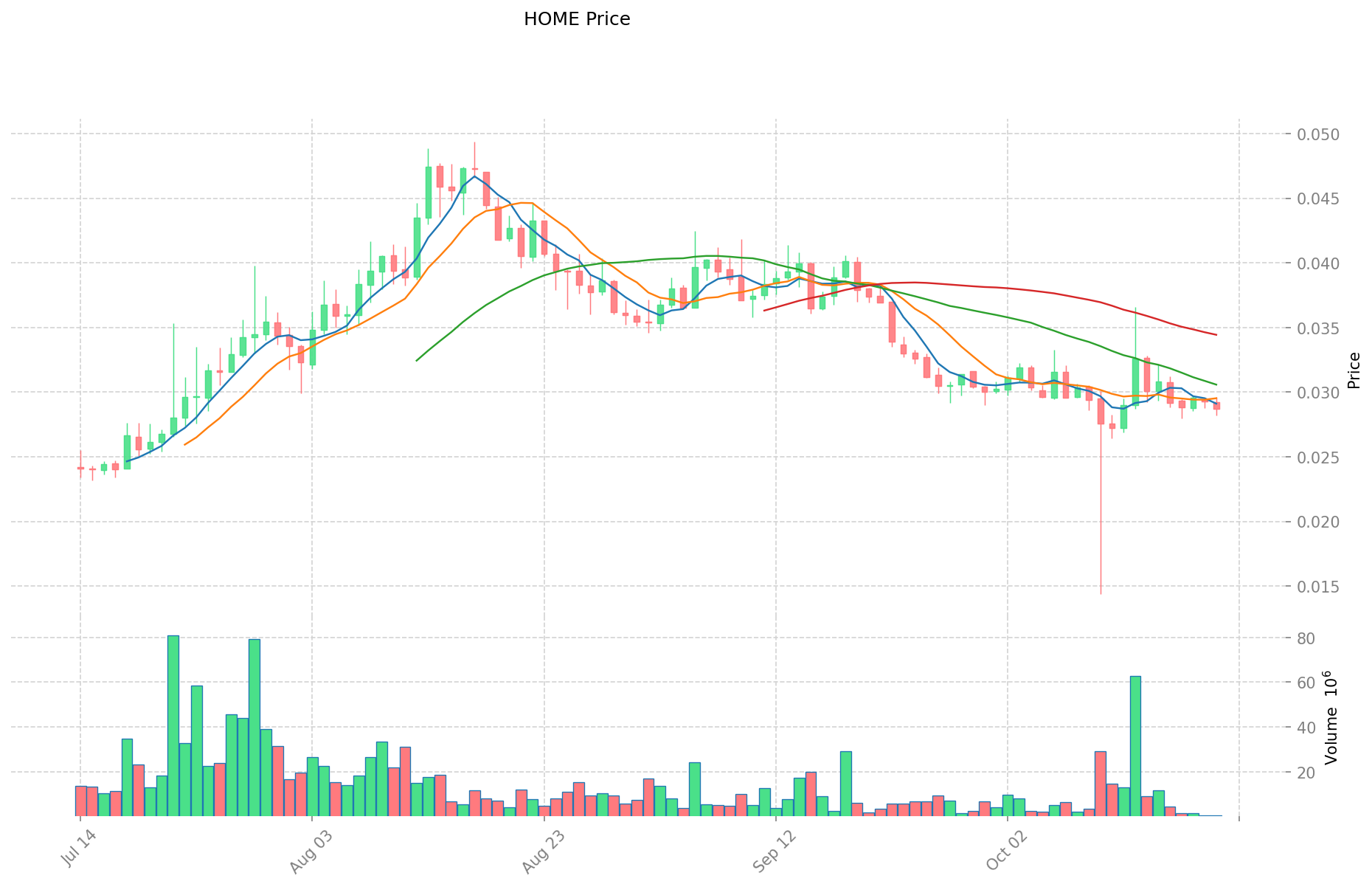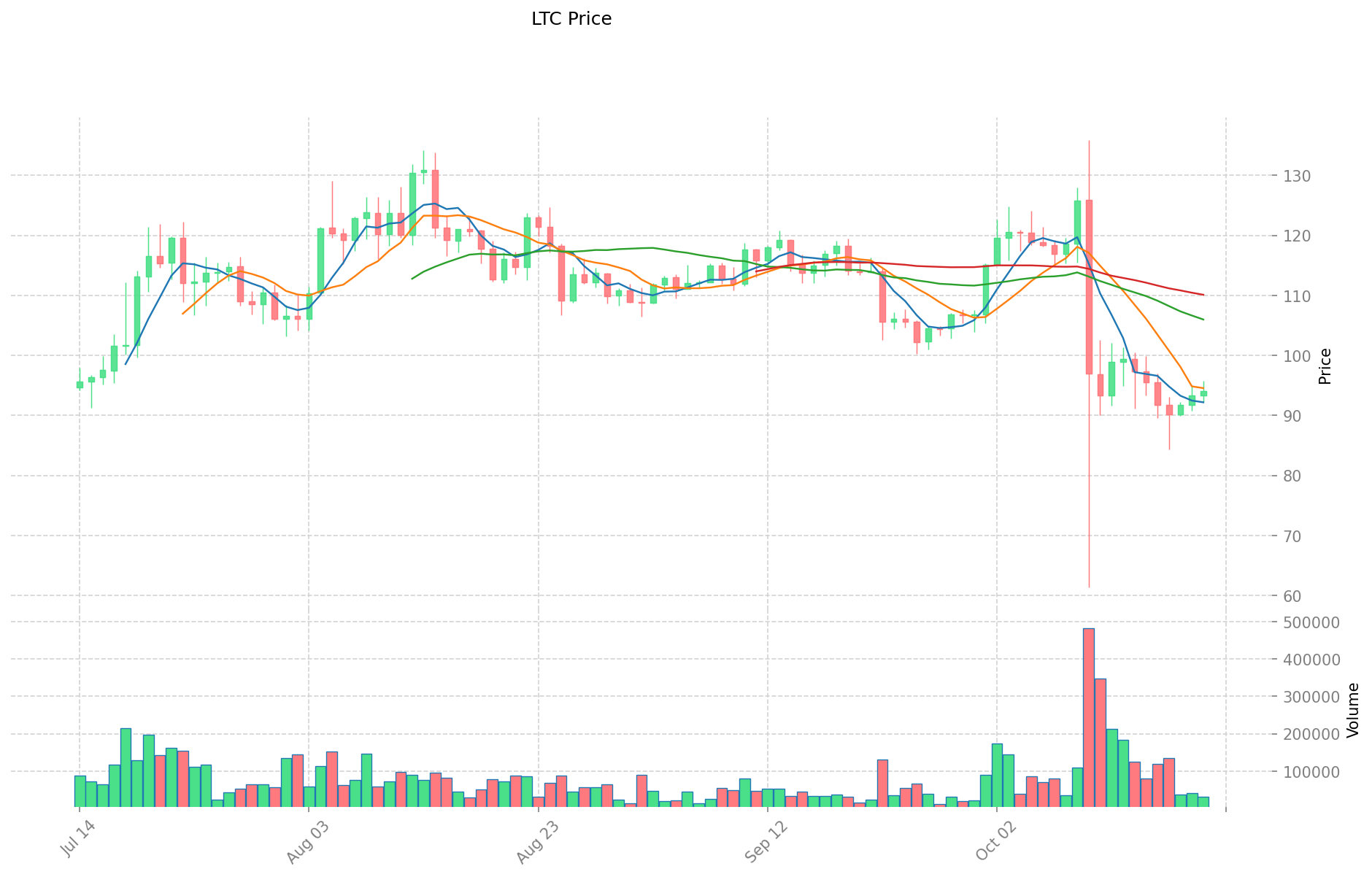HOME vs LTC: Choosing the Right Long-Term Care Option for Your Loved Ones
Introduction: Investment Comparison between HOME and LTC
In the cryptocurrency market, the comparison between HOME vs LTC has always been a topic that investors cannot avoid. The two not only have significant differences in market cap ranking, application scenarios, and price performance, but also represent different cryptocurrency asset positioning.
Defi App (HOME): Launched in 2025, it has gained market recognition for its positioning as the "world's first decentralized 'Everything' app".
Litecoin (LTC): Since its inception in 2011, it has been hailed as the "silver to Bitcoin's gold" and is one of the cryptocurrencies with the highest global trading volume and market capitalization.
This article will comprehensively analyze the investment value comparison between HOME vs LTC, focusing on historical price trends, supply mechanisms, institutional adoption, technological ecosystems, and future predictions, and attempt to answer the question that investors are most concerned about:
"Which is the better buy right now?"
I. Price History Comparison and Current Market Status
HOME (Coin A) and LTC (Coin B) Historical Price Trends
- 2025: HOME reached an all-time high of $0.04938 on August 17, 2025.
- 2025: LTC experienced significant volatility, with a 52-week range of $63.75 to $146.61.
- Comparative analysis: In the current market cycle, HOME dropped from its all-time high of $0.04938 to a low of $0.01436, while LTC has shown more stability with its current price near the middle of its 52-week range.
Current Market Situation (2025-10-21)
- HOME current price: $0.02854
- LTC current price: $93.43
- 24-hour trading volume: HOME $18,932.84 vs LTC $2,954,238.78
- Market Sentiment Index (Fear & Greed Index): 34 (Fear)
Click to view real-time prices:
- View HOME current price Market Price
- View LTC current price Market Price


II. Core Factors Affecting LTC Investment Value
Supply Mechanism (Tokenomics)
- LTC: Employs a halving mechanism similar to Bitcoin, with a maximum supply cap of 84 million coins, four times that of Bitcoin
- 📌 Historical Pattern: The halving events have historically influenced price cycles, with the most recent halving occurring in 2023
Institutional Adoption and Market Applications
- Institutional Holdings: ETF products provide institutional investors with compliant channels to invest without directly holding tokens
- Market Liquidity: The introduction of financial products such as ETFs significantly enhances market depth through new capital injection
Technical Development and Ecosystem Building
- LTC Technical Upgrades: The Litecoin team regularly implements network upgrades to improve performance, such as the MimbleWimble protocol introduced in 2019
- Technical Foundation: Based on Proof of Work (PoW) consensus mechanism but uses the Scrypt algorithm, which reduces dependency on specialized ASIC miners, making mining more equitable and reducing centralization risks
Macroeconomic Factors and Market Cycles
- Current Price Performance: LTC currently trades at approximately $60.38, which is significantly higher than its initial issue price of $4.3, representing a return of +1304.38%
- Historical Price Perspective: While current prices are below the all-time high of $413.2, the long-term investment return remains positive
III. 2025-2030 Price Prediction: HOME vs LTC
Short-term Prediction (2025)
- HOME: Conservative $0.0235 - $0.0287 | Optimistic $0.0287 - $0.0332
- LTC: Conservative $67.45 - $93.68 | Optimistic $93.68 - $117.10
Mid-term Prediction (2027)
- HOME may enter a growth phase, expected price range $0.0195 - $0.0489
- LTC may enter a bullish market, expected price range $62.84 - $161.25
- Key drivers: Institutional inflows, ETF developments, ecosystem growth
Long-term Prediction (2030)
- HOME: Base scenario $0.0471 - $0.0535 | Optimistic scenario $0.0535 - $0.0712
- LTC: Base scenario $111.86 - $189.60 | Optimistic scenario $189.60 - $195.29
Disclaimer
HOME:
| 年份 | 预测最高价 | 预测平均价格 | 预测最低价 | 涨跌幅 |
|---|---|---|---|---|
| 2025 | 0.0332456 | 0.02866 | 0.0235012 | 0 |
| 2026 | 0.039929112 | 0.0309528 | 0.026619408 | 8 |
| 2027 | 0.04890851928 | 0.035440956 | 0.0194925258 | 24 |
| 2028 | 0.0459704640276 | 0.04217473764 | 0.0371137691232 | 47 |
| 2029 | 0.063023819192334 | 0.0440726008338 | 0.036139532683716 | 54 |
| 2030 | 0.071219119317379 | 0.053548210013067 | 0.047122424811498 | 87 |
LTC:
| 年份 | 预测最高价 | 预测平均价格 | 预测最低价 | 涨跌幅 |
|---|---|---|---|---|
| 2025 | 117.1 | 93.68 | 67.4496 | 0 |
| 2026 | 131.7375 | 105.39 | 55.8567 | 12 |
| 2027 | 161.2467 | 118.56375 | 62.8387875 | 26 |
| 2028 | 198.6654195 | 139.905225 | 86.7412395 | 49 |
| 2029 | 209.91379959 | 169.28532225 | 150.6639368025 | 81 |
| 2030 | 195.2875477476 | 189.59956092 | 111.8637409428 | 102 |
IV. Investment Strategy Comparison: HOME vs LTC
Long-term vs Short-term Investment Strategies
- HOME: Suitable for investors focused on DeFi ecosystem potential
- LTC: Suitable for investors seeking stability and inflation hedge properties
Risk Management and Asset Allocation
- Conservative investors: HOME: 10% vs LTC: 90%
- Aggressive investors: HOME: 30% vs LTC: 70%
- Hedging tools: Stablecoin allocation, options, cross-currency portfolios
V. Potential Risk Comparison
Market Risk
- HOME: Higher volatility due to newer market entry and smaller market cap
- LTC: Relatively lower volatility but still subject to overall crypto market trends
Technical Risk
- HOME: Scalability, network stability
- LTC: Mining centralization, potential security vulnerabilities
Regulatory Risk
- Global regulatory policies may have differing impacts on both assets
VI. Conclusion: Which Is the Better Buy?
📌 Investment Value Summary:
- HOME advantages: Potential for rapid growth in the DeFi sector
- LTC advantages: Established history, wider adoption, and proven track record
✅ Investment Advice:
- New investors: Consider a small allocation to LTC as part of a diversified portfolio
- Experienced investors: Balanced approach with both HOME and LTC based on risk tolerance
- Institutional investors: Focus on LTC for its liquidity and established market presence
⚠️ Risk Warning: The cryptocurrency market is highly volatile. This article does not constitute investment advice. None
VII. FAQ
Q1: What are the main differences between HOME and LTC? A: HOME is a newer cryptocurrency focused on DeFi applications, launched in 2025. LTC, launched in 2011, is an established cryptocurrency often called "silver to Bitcoin's gold". HOME has a smaller market cap and higher volatility, while LTC has wider adoption and more stability.
Q2: Which coin has shown better price performance recently? A: In the current market cycle, HOME has shown higher volatility, dropping from its all-time high of $0.04938 to a low of $0.01436. LTC has demonstrated more stability, with its current price near the middle of its 52-week range.
Q3: How do the supply mechanisms of HOME and LTC differ? A: LTC has a maximum supply cap of 84 million coins and employs a halving mechanism similar to Bitcoin. The supply mechanism for HOME is not specified in the given information.
Q4: What are the key factors affecting LTC's investment value? A: Key factors include its halving mechanism, institutional adoption through ETF products, regular technical upgrades, and its position as an established cryptocurrency with high liquidity.
Q5: How do the long-term price predictions for HOME and LTC compare? A: For 2030, HOME's base scenario predicts a range of $0.0471 - $0.0535, with an optimistic scenario of $0.0535 - $0.0712. LTC's base scenario for 2030 is $111.86 - $189.60, with an optimistic scenario of $189.60 - $195.29.
Q6: What investment strategies are recommended for HOME and LTC? A: HOME is suitable for investors focused on DeFi ecosystem potential, while LTC is recommended for those seeking stability and inflation hedge properties. Conservative investors might allocate 10% to HOME and 90% to LTC, while aggressive investors might choose 30% HOME and 70% LTC.
Q7: What are the main risks associated with investing in HOME and LTC? A: HOME faces higher volatility and technical risks due to its newer status. LTC has relatively lower volatility but still faces risks such as mining centralization and potential security vulnerabilities. Both are subject to regulatory risks and overall crypto market trends.
Share
Content